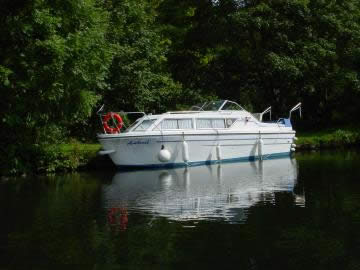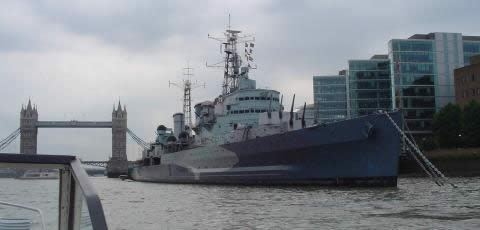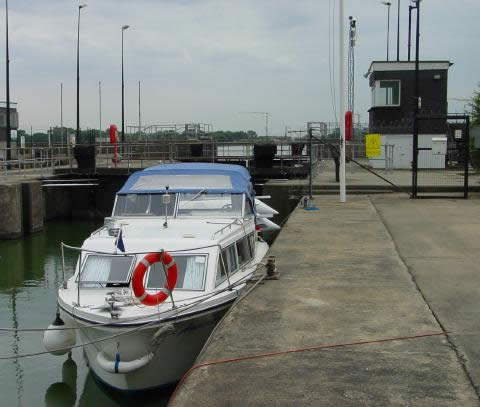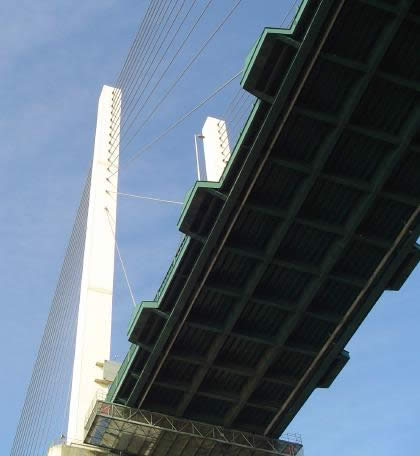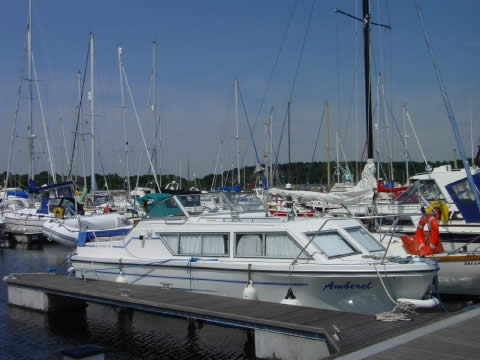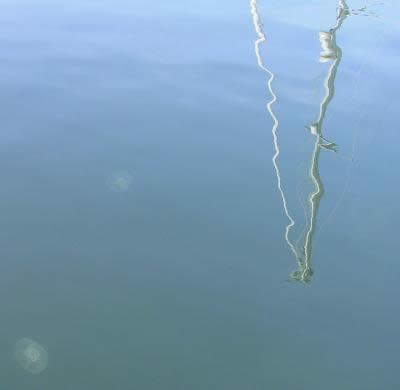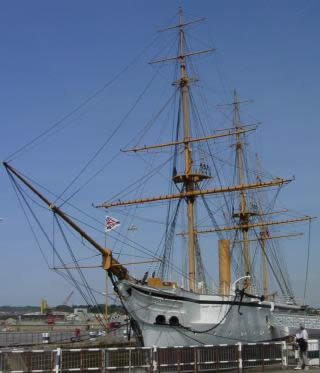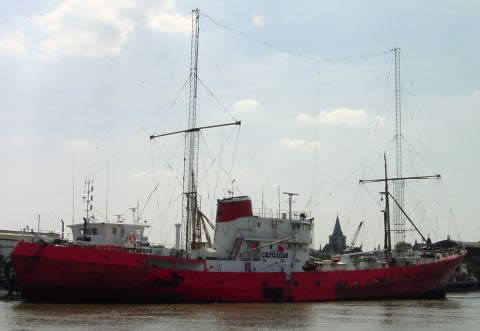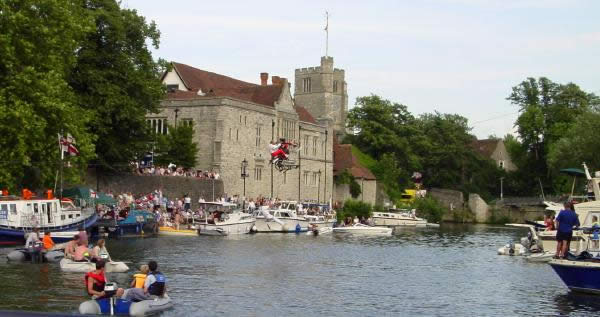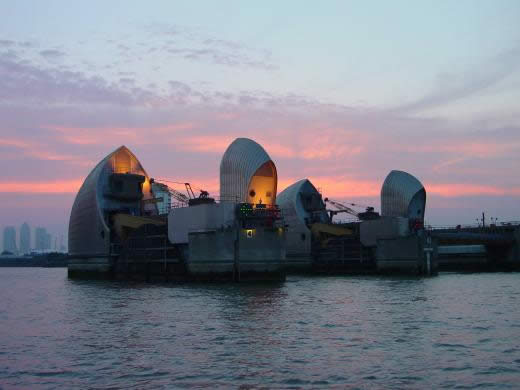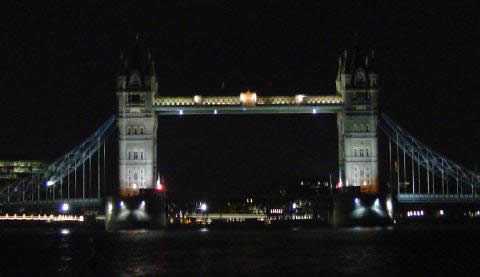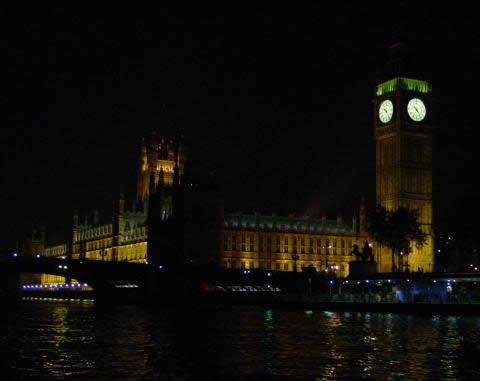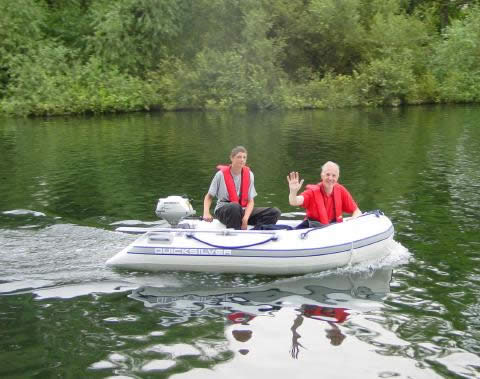|
you have Guest user access (not logged in)
|
||
      visitors since May 2003 ClubSite © ver 1.3 |

|
|
click here to return to the gallery list
|
River
Thames, down to the River Medway, in 'Amberel'
-
by Andy Lawrie
|
|||||||||||||||||||||||||||||||||
Introduction
She is berthed at Windsor Racecourse Yacht Basin on the Thames. I have several times taken her down river as far as Greenwich. This trip is more ambitious, taking us past Dartford, Tilbury and Southend, round the Isle of Grain and into the Medway past Sheerness, Chatham and Rochester, then onto the non-tidal part of the river through Maidstone and Tonbridge. I
was accompanied by my brother-in-law and my nephew, and of course by
all my Muppets that permanently reside on the boat. My wife stayed at
home - she comes on the boat only if it is flat calm. As this trip involved us going well into the estuary I took many precautions over and above those I normally deem necessary. I purchased life jackets for all of us. I bought and licensed a portable VHF radio, then went on a one day course at Bisham Abbey to obtain my certificate of competence. I purchased a substantial inflatable dinghy and mounted davits onto the transom so I could carry it while inflated. I fitted a hinged bracket for the dinghy's Honda 2HP outboard to provide auxiliary power in the event of main engine failure. I equipped us with paper charts covering London Bridge to Rochester, and also arranged for these to be displayed on my notebook and controlled by my GPS unit. I took to the police station the out of date flares and smokes that were in the boat when I bought it, and replaced them with new ones. I extended my anchor warp to 30 metres plus the 3 metres of chain. I fitted a new plug and socket for the forward navigation and anchor lights as the old ones were somewhat unreliable. I felt we were as ready as we were ever likely to be. Day 1 The first day was uneventful. My crew drove down from Birmingham, we loaded up the boat and set off just before lunchtime. We spent the night at Hampton Court. We inflated the dinghy, took it out for a hour or so and then hung it from the davits. Day
2
At the barrier we called Woolwich Radio on channel 14 - this was my very first VHF transmission. We were told that B span was closed and we should use C span. The barrier looks rather plain from upstream but is more interesting once downstream of it - you can see much more detail.
We could not get into Gallions Point until an hour after low tide and had planned accordingly. According to the tide tables the tide should have turned by now, but it was still ebbing at over 2 knots. After passing the ferry we called up Gallions Point on channel 80, but there was no reply. After trying again 5 minutes later we 'phoned instead - they were having a tea break and not listening to the VHF! They were now aware we were waiting outside by the jetty for the earliest opportunity to lock in, but a very uncomfortable wait it was - the wash from passing ships caused the boat repeatedly to crash into the pilings and we had to hold it off with boat hooks. In retrospect we would have been better off crossing to the other side of the river and putting down the anchor.
Day 3 The marina is less polished than most others. There was no electrical hook-up for us, and the water point was much too far away for our hose to reach. It was also expensive compared to other marinas, largely due to the separate fee they charged for the lock. The people were friendly enough, but I suspect they are really not set up for casual visitors - in the 17 hours we were tied up there was no other traffic. We had chosen Gallions Point because it was further downstream than Limehouse Basin, but in future I think we will stick to Limehouse.
And then past what was one of the things I had been particularly looking forward to - Tilbury Grain Terminal. Tilbury Grain Terminal? Why was I interested in Tilbury Grain Terminal? Well, 36 or 37 years ago, when I was an Electrical Engineering apprentice, I spent most of one bitterly cold winter working on the switchgear for this place when it was being built. Cold days spent 80 feet up in the air, on an open platform, on a jetty stuck out in the Thames, wiring up the barge spout control panels, the grain elevators, the conveyors, fans, etc. And in all the intervening years it hadn't changed at all. There were a few additions, but all the bits I worked on looked just the same as they did nearly 4 decades ago.
And
on, past Gravesend into Sea Reach, taking particular care not to cut
the corner at the western end of Blyth Sands. There was a steady force
3, a lovely gentle swell rocked the boat and the sun shone. A most pleasant
way to spend the morning. By now I was getting used to constantly monitoring the echo sounder, compass and GPS, which are all pretty much irrelevant on the non-tidal river. The
tide turned before we got to Southend, a consequence of our slightly
delayed start, but there wasn't much further to go before we entered
the Medway, when it would be in our favour again. We rounded Grain Spit. We didn't go right round the buoys but cut the corner, keeping a watchful eye on the echo sounder. Past Garrison Point and into the Medway. Past Sheerness and the Swale, Stangate Creek and then Hoo Island. Tried calling up Chatham Maritime Marina but the limitations of my handheld VHF became apparent - they could hear me but reception was awful and I told them I would call again when we had rounded St. Mary's Island. The second time it was clear as a bell and we had to wait only for a couple of minutes on the pontoon before the lock gates opened. My VHF technique needs a lot more practice - in particular I find it hard to stop myself saying "bye" instead of "out" when we have finished. Chatham Maritime Marina is as professional and polished as Gallions Point was rough and ready. Immaculately clean, electricity and water at every berth, an excellent facilities block, big, stable pontoons, 24 hour opening, locking every 15 minutes with everyone being organised over VHF before they enter the lock so they know exactly where to go. And, considering the above, it was not expensive - £17 for the one night.
Day 4
A lot of industry, some of it quite smelly, means it would not be my first choice for cruising, and there was much debris in the water. About a mile before we reached the first lock at Allington it became much prettier. After
a considerable wait below the lock, we entered it. The reason for the
delay became apparent - the single overworked lock-keeper had to process
the paperwork for all unregistered boats. The good news was that the
Environment Agency operate a reciprocal arrangement between Thames and
Medway, and we were issued with a free 15 day visitor license. We purchased
a key for the lifting bridge at Yalding after carefully comparing it
to the British Waterways facilities key - it was similar, but not the
same. As we were about to leave reinforcements arrived for the lock-keeper,
though unfortunately too late to be of assistance. We
stopped just above the lock to fill up with water, dispose of the rubbish
and empty the loo. It was as well we did; facilities on the Medway appear
to be few and far between. About
half a mile above the lock we encountered two lads and a girl in a small
speedboat with an enormous, but inert, engine. They were using an oar
to paddle very, very slowly upstream. I enquired if they would like
a tow and they readily acceded. I soon understood why - they needed
to go all the way to Maidstone, and at the rate they had been proceeding
it would have taken them several days! We enquired of them where would be a good place to stop for the night, and they suggested Maidstone itself, as "that is where all the action is". We thought this a slightly strange expression, but it soon became apparent what they meant - we had arrived in the middle of Maidstone River Festival. There were boats lining both banks as far as the eye could see, decorated with flags and fairy lights, mostly moored stern first and lashed beam to beam.
Eventually
we were released by the safety boat and continued past the old church.
We passed a couple of guys sitting at the bottom of their garden in
deckchairs and with a crate of beer between them, who were "marking"
the boats that passed. They gave us 2 "eights", which I felt
was very generous considering that we had no decoration of any description. There
was no question of finding a mooring in the town that night, so we continued
upstream in a south-westerly direction. The river was quite narrow by
now, and there were no bankside moorings to be found, so when we came
across a small "bay", on the side opposite the towpath, we
dropped anchors at bow and stern and pulled the boat into the bay, well
out of the way of other traffic. There we settled down for our evening meal. It was a quiet and relaxing place to stay. At least, up until 21:00 it was. Suddenly there was a noise of whooping and hollering and a speedboat came into view, travelling at speed and on the plane. At the last minute he spotted us and shut the throttles. It came off the plane and dumped into the water, creating a massive wave in the river that, apart from our "bay", was barely 20ft wide. The wave, which must have been 3 or 4 feet high, caught us directly on the beam. It was fortunate that the wine was finished, there was nothing on the cooker and no-one was using the loo at the time! No damage was sustained, but it was extremely uncomfortable. It was clearly the worst case of inconsiderate behaviour on the river that I have witnessed, and I assume that alcohol consumed during the festival was a contributory factor. Half an hour later he came back down the river at an altogether more reasonable speed, and as he passed he offered his apologies. Regretfully I did not have the grace to acknowledge them as I was still very annoyed with him, and I suspect he was concerned that I might report him to the authorities. To be fair, we were not easy to see from a distance, but that is no excuse for him - his actions were likely to have a devastating effect on the wildlife habitat, and he offered no apologies to them. Day 5 Another lazy day,
the first of several. Lazy, that is, except for operating the locks.
On the Thames we have keepers to operate the locks: on the Medway you
do it yourself, and there is no electricity to assist. We tune in to
the local practice of leaving locks with the gates open and paddles
closed - on the Thames when we operate them manually we should leave
them empty with all gates closed, but the "Medway Way" does
save a lot of effort. We then proceeded to "The Water Meadows", which had been recommended by several of the people we met. It was indeed a pleasant spot, the only significant rural mooring we found that was not restricted to club members. In the evening we took out the dinghy again. Day 6 Into Tonbridge. Went shopping for milk and bread. My nephew, who is mad about trains (I don't think he would disagree if I said obsessive about trains) went train spotting for a couple of hours. And then we went back to the "The Water Meadows", having seen nowhere better during the day. Day 7 Back to Maidstone. Walked around the town and had a meal. In the evening went back upstream a little way, as the moorings in town were a little noisy. The last couple of days have been very quiet, but stay with it - it does get more exciting. Day 8 The
plan for today was to go to Queenborough, and then on to St. Katherine
Docks on the next day. I would have liked to use Chatham Maritime Marina
again, but it would have meant leaving at 02:30 to catch the tide and
I preferred not to travel in the dark. From Queenborough we could leave
at 04:00, and it would be getting light by then. I
checked the weather and shipping forecast on the web - Thames was easterly
force 3. We
left our mooring at 08:30 and stopped in Maidstone for fresh milk. We
then went on to Allington, did the usual water, rubbish and loo, and
entered the lock just at high tide. We bid farewell to the keeper and
set off downriver at 10:00. We
stopped at Medway Bridge Marina and filled right up with fuel. Then
on past Rochester and Chatham. On the way we passed several yachts with
their sails flapping. On the trip out we were being passed by most of
the sailing boats, but today it was flat calm with barely a breath of
wind. Until we got to Saltpan Reach, where very suddenly it became very
much fresher, and the sea became fairly choppy. It was an easterly breeze
against the ebb tide, but the considerable increase in wind speed was
more than expected. When
we got to the Swale we turned south toward Queenborough. It was more
sheltered and much less choppy here, but there was still much more movement
than I had anticipated. It looked like spending the night there might
be uncomfortable, and at that point I made a decision that, with hindsight,
I believe was wrong. I decided we would carry on round Grain Spit and
into London that evening. Low
tide was at 16:00 and it was now about 14:30. We turned back towards
the estuary. But
the further we went, the rougher it got. As we came out past Garrison
Point the waves were up to about 5 feet, with white horses everywhere
and spray in the wind. I make that force 5. This is a river boat. I
should have turned round, and in retrospect I don't know why I didn't.
But I didn't. There
was no cutting off the corner at Grain Spit this time. Quite apart from
keeping away from the lee shore and in deeper water, I did not want
to present my beam to the sea. No flotilla of yachts this time - apart
from one other sturdy looking little tub we were the only boat out there. My
brother-in-law was hanging on for dear life to the notebook, which was
threatening to fling itself on the floor. A
wave washed over the foredeck, lifted the life-ring of its hook and
snapped the restraining cord like cotton. The life-ring drifted back
past the cockpit, but I was much too pre-occupied to attempt to rescue
it. Gonzo
the Great performed a magnificent feat - a daring, death defying plunge
from his home on the top shelf straight into the sink. The
apples and oranges had broken out of the locker and were rolling the
full length of the boat every time it pitched. I
was giving it plenty of power as this seemed to make the boat more stable,
but was amazed at how much energy the movement was absorbing - with
the r.p.m. at which the engine was running I normally would be doing
over 6 knots, but in this sea I was making less than 4. After
what seemed like ages, my brother-in-law, who was watching the chart
on the notebook showing our GPS position, indicated that he thought
we could turn about and get round the north side of Grain Spit. I waited
until I thought we had a moderate distance between two wave crests and
turned as quickly as I could. And at least this boat does turn quickly.
Once we were around and were running with the wind and waves the motion
was much less violent. We
entered Sea Reach; the further along we got, the more directly we were
before the wind, and the less severe was the pitching. Sea Reach seemed
never ending, but the tide turned halfway along it and we made better
progress. Heard a call on the VHF - someone called London Coastguard
and said they were in the estuary, grounding and taking on water. It
wasn't done as a Mayday or a Pan-Pan, and the Coastguard took them off
to another channel. They gave no position, but as I had picked it up
and my reception appears limited I guess they weren't so far away. I
looked out for them, but didn't see anything, and am not sure what I
could have done if I had. Passed
a catamaran going the other way - it too was finding it heavy going.
Apart from the boat that accompanied us out of the Medway this was the
only small boat we saw. Eventually
we were able to turn south into Lower Hope Reach. The motion briefly
was worse as we presented our port beam to the sea, but once round the
corner the worst was over. Back past Tilbury and the M25.
Day 9 We didn't get up with the dawn. We set off from Teddington at 10:30, stopped in Staines for provisions and headed for Runnymede for the night - we were now well ahead of schedule and there was no rush to get home.
Day 10 Just 3 locks from Old Windsor back to the Yacht Basin. We got back at 12:00. Packed my brother-in-law and nephew back off to Brum and spent a couple of hours hosing all the salt off the boat. And that, as they say, was that. Summary So,
what did we learn. We
learnt not to accept the forecast as gospel. We leant that we should
be prepared to turn round if the conditions warrant it. We learnt just
how important the life jackets were. We learnt that the dinghy and auxiliary
engine may have been useless in those conditions - it's very possible
we would not have been able to deploy them had we run into trouble. We
learnt that we would have greatly enjoyed those conditions had we more
confidence in the abilities of the boat. None of us was at all sea sick.
I found the journey exhilarating, spoiled only by my concern for the
safety of the boat and my responsibility for the crew. If you had the stamina to read right through to here, and you have any comments, feel free to email me at andy@lawrie.me.uk (Many
thanks to Andy for his kind permssion to include his © photos and
text on this site) |
|||||||||||||||||||||||||||||||||
